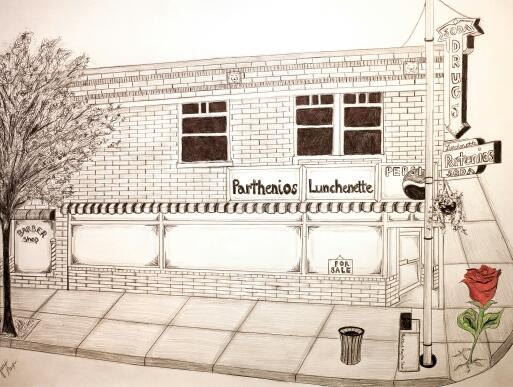
Scaling an Etsy Economy for a changing workforce
Dana Mauriello is director of Human Scale Labs at Etsy and is scheduled to attend the Knight Foundation Civic Innovation in Action Studio on May 12-14, a workshop where civic and business leaders from across the country will discuss ideas to improve cities by harnessing talent, advancing opportunity and promoting civic engagement. Photo credit: Jamie Kasper.
In August 2012, the mayor of Rockford, Ill., reached out to Etsy CEO Chad Dickerson on Twitter to ask how Rockford can develop an “Etsy Economy.” Over the last seven years, more than 1 million Etsy sellers have been building businesses and defining success on their own terms, by selling handmade goods, vintage items and craft supplies directly to buyers on the Etsy marketplace. The result has been a new type of economy, an Etsy Economy, that is highly accessibility to engage in, relies on strong community ecosystems and values sustainable growth. Related Links
“Putting ideas into action to build better cities” by Carol Coletta on KnightBlog
“Learning Lab gathers ideas on promoting community engagement” by Carol Coletta on KnightBlog
“Learning Lab gathers ideas on making the most of talent in our cities” by Carol Coletta on KnightBlog
“Boston adopts new tools to engage residents in civic life” by Nigel Jacobs on KnightBlog
“Harriet Tregoning, identifying ideas to expand opportunities in cities” by Carol Coletta on KnightBlog
“Studio developing ideas on advancing to harness talent of a changing workforce” by Anusha Alikhan on KnightBlog
“Innovators embrace broad themes of robust engagement” by Andrew Sherry on KnightBlog
“Innovators develop ideas on advancing opportunity” by Michael Bolden on KnightBlog
Rockford is is a city of 150,000 that was formerly a manufacturing hub and is now struggling with high unemployment after multiple local factories closed or shrank. In his search for new economic development opportunities to revitalize the city, the mayor sought to lean on Rockford’s maker history in a new way, focusing now on creating maker-entrepreneurs.
In partnership with the city of Rockford and the Rockford Etsy team of local sellers, we answered the mayor’s call to build an “Etsy Economy” by developing the Craft Entrepreneurship program. The program helps people with craft skills earn supplemental income through entrepreneurship, using hands-on education with Etsy as their learning lab. After completing one class in Rockford, we’ve since piloted in New York as well and are now working on additional pilots in Newark, N.J.; Dallas; and Watsonville, Calif., before making the curriculum open source. Seventy-eight people have now participated in the program and started to sell their work in Rockford and New York. We’ve highlighted some of the participants’ work here.
One big lesson learned in this process has been that there are currently hurdles in the way of local workforce development agencies offering micro-entrepreneurship programming, and addressing these issues has the potential to strengthen local economies. Specifically, agencies wrestle with consistent metrics and sustainable funding sources. Current metrics of success are tied to the number of full-time jobs created. Entrepreneurship, and especially micro-entrepreneurship, often falls outside of these success metrics. There is no concept in most common success metrics of accounting for supplemental income from multiple sources or quality of life. Agencies are incentivized to create programming that maximizes the number of full-time jobs created because these metrics are the key to unlocking funding sources. Innovative agencies looking to incorporate micro-entrepreneurship training have a difficult time aligning this to funding sources and have to think creatively about their options.
Cities can build the most robust economies by establishing workforce development strategies that create a combination of full-time employment, full-time entrepreneurship, and supplemental income opportunities. We should support them in doing so by adopting universal success metrics at a federal and local level that flexibly account for quality of life and acknowledge the reality of supplemental income and self-employment. These metrics should then be used to unlock a common pool of funding that each city can strategically split between the different elements of their workforce development strategy based on the unique needs of their local community.
Cities can create incredibly innovative workforce development programs if we give them the freedom and resources to do so.
Recent Content
-
Community Impactarticle ·
-
Community Impactarticle ·
-
Community Impactarticle ·


